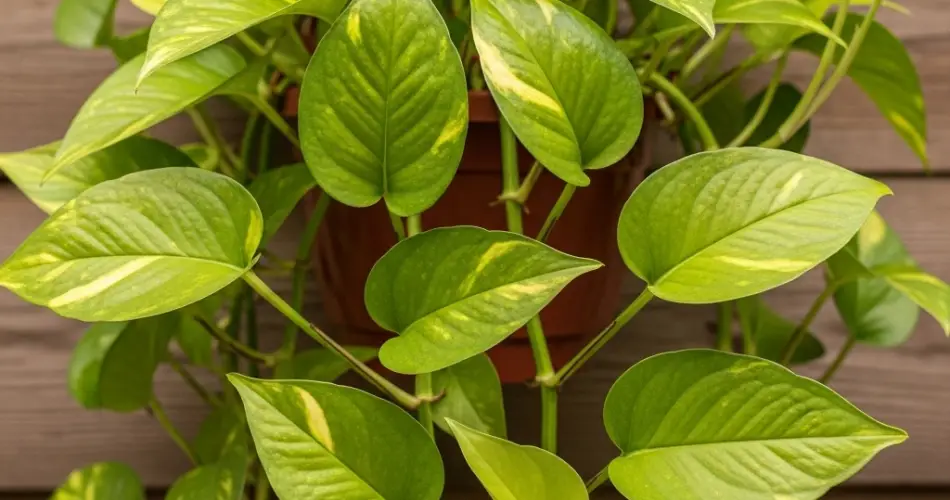Pothos (Epipremnum aureum), also known as devil’s ivy, is one of the easiest and most forgiving houseplants to grow. Known for its lush vines and heart-shaped leaves, pothos is a favorite among beginners and experienced gardeners alike. One of its most appealing features is how easily it can be propagated through cuttings. With a few simple techniques, you can germinate new pothos plants and see results much faster than you might expect.
If you’re ready to expand your pothos collection or share plants with friends, follow this expert method for quick and successful germination.
1. Select a Healthy Mother Plant
To germinate pothos quickly and effectively, start with a vigorous and healthy mother plant. Look for one with vibrant green leaves, long vines, and no signs of pests or disease. Avoid using cuttings from a plant that’s wilting or yellowing, as these are less likely to root well.
Choose a vine that has at least 4–6 healthy leaves and a few visible nodes—the small bumps on the stem where roots will emerge.
2. Make the Right Cut
Using clean, sharp scissors or pruning shears, cut a section of vine that is 4–6 inches long, containing 2–4 leaves and at least one or two nodes. Nodes are essential because this is where root development happens.
Cut just below a node to ensure the cutting has all the necessary tissue for rooting. If there are leaves too close to the bottom node, remove them to prevent them from sitting in water or soil, which can lead to rot.
3. Choose Between Water or Soil Propagation
You can germinate pothos cuttings in either water or soil, and both methods are effective. However, each has its pros and cons depending on how fast you want to see results.
Water propagation is the most popular method because it allows you to monitor root growth and adjust conditions as needed.
Soil propagation is a bit more hands-off but often leads to quicker adaptation when transitioning the cutting into a pot.
4. Water Propagation for Fast Visual Growth
To propagate in water:
-
Fill a clean jar or glass with filtered or distilled water at room temperature.
-
Place the cutting in the jar with the nodes fully submerged.
-
Keep the jar in a bright, indirect light spot—avoid direct sun, which can overheat the water.
-
Change the water every 3–4 days to keep it fresh and oxygen-rich.
Roots usually begin forming within 7–14 days, and you can transplant the cutting into soil once the roots are 2–3 inches long.
To speed things up, you can add a few drops of liquid rooting hormone or willow water (a natural rooting stimulant) to the water.
5. Soil Propagation for Faster Potting Results
For soil propagation:
-
Use a well-draining mix, ideally made of peat moss, perlite, and a bit of compost.
-
Dip the cut end in rooting hormone powder (optional but helpful).
-
Plant the cutting in the soil so the node is fully buried, and firm the soil around it.
-
Water the soil lightly and cover the pot with a clear plastic bag to create a mini greenhouse. This helps maintain humidity, which is key for fast rooting.
-
Place the pot in bright, indirect light and keep the soil lightly moist (not soggy).
Roots typically develop within 10–14 days, and new leaf growth may appear soon after.
6. Create the Ideal Germination Environment
To get results faster, it’s essential to provide the optimal environment for your cuttings:
-
Humidity: Maintain humidity around 60–80%. If your home is dry, use a humidity tray or mist the cuttings daily.
-
Temperature: Keep the area consistently between 70–80°F (21–27°C). Avoid cold drafts or placing cuttings near heating vents.
-
Light: Bright, indirect light encourages fast rooting. Avoid direct sunlight, which can scorch tender cuttings or overheat water jars.
7. Transitioning to Long-Term Growth
Once your cuttings have rooted:
-
If propagated in water, transfer them to soil gently. Use a small pot with drainage holes and fresh potting mix.
-
Water thoroughly after transplanting and allow the plant to adjust in a low-stress environment.
During the first few weeks after potting, monitor for signs of stress, such as drooping leaves or yellowing. Keep the soil lightly moist and gradually acclimate the plant to brighter conditions if needed.
Final Thoughts
Pothos is one of the easiest plants to propagate, and with the right method, you can germinate new plants faster than ever. Whether you choose water or soil propagation, paying attention to light, humidity, and care will ensure rapid root development and healthy growth. In just a couple of weeks, you can enjoy thriving new pothos vines ready to brighten your home or share with fellow plant lovers.



